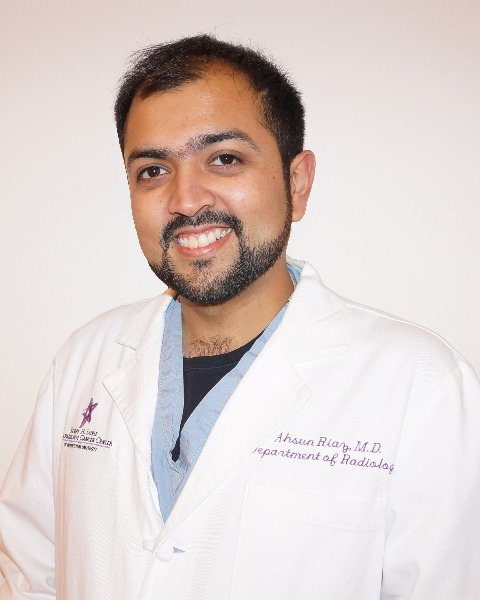SIR 2025
Gastrointestinal Interventions
Scientific Session
Comparing Percutaneous Cholecystostomy and Cholecystectomy Outcomes for Emphysematous Cholecystitis: A 10-Year Single Center Experience
- MA
Mohamad M. Alzein
Medical Student
Feinberg School of Medicine, United States - AG
Andrew C. Gordon, MD, PhD (he/him/his)
Assistant Professor
Feinberg School of Medicine, United States - AN
Albert Nemcek, MD
Attending Physician
Northwestern Memorial Hospital, United States 
Ahsun Riaz, MD
Interventional Radiologist
Northwestern University, United States
Presenting Author(s)
Author/Co-author(s)
To present the outcomes of percutaneous cholecystostomy (PC) for the treatment of emphysematous cholecystitis compared to those of cholecystectomy.
Materials and Methods:
Imaging studies of patients with possible emphysematous cholecystitis were retrospectively reviewed from May 2013 to June 2023 and were included upon confirmation. Fourteen patients (median age, 68.6 years; range, 50.8-79.8 years) and thirteen patients (median age, 69.1 years; range, 46.4-92.7 years) were treated with PC and cholecystectomy, respectively. Baseline demographic information was similar between the two groups and are presented in Table 1. Clinical outcomes, such as length of hospital stay, days until symptom resolution, and number of complications were recorded. Mann-Whitney and Fisher’s exact tests were utilized to determine significance between continuous and categorical variables, respectively. PC conversion to cholecystectomy was analyzed utilizing the Kaplan-Meier method. Survival analyses were compared by log-rank testing.
Results: The hospital length of stay was significantly higher for patients treated with PC (median 10 days, range 3-48 days) versus cholecystectomy (median 4 days, range 0-13 days; P=0.016), although there were no significant differences in the days for reported symptom resolution (P=0.29). The number of complications between the two groups was similar (P=0.12). Seventy-nine percent of patients (n=11) of the PC group converted to cholecystectomy at a median of 2.3 months (95% CI, 0.3-5.5 months; range, 0.03-8.23 months). The overall survival between the two groups was not statistically significant (P=0.4); both the PC and cholecystectomy groups had one mortality within 30 days and four within one year.
Conclusion:
PC may be a viable treatment option for emphysematous cholecystitis for patients who are not surgical candidates as it may provide similar outcomes to cholecystectomy and associated with an increased hospital length of stay by 6 days.


.jpg)